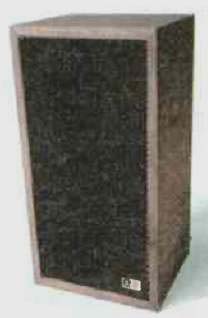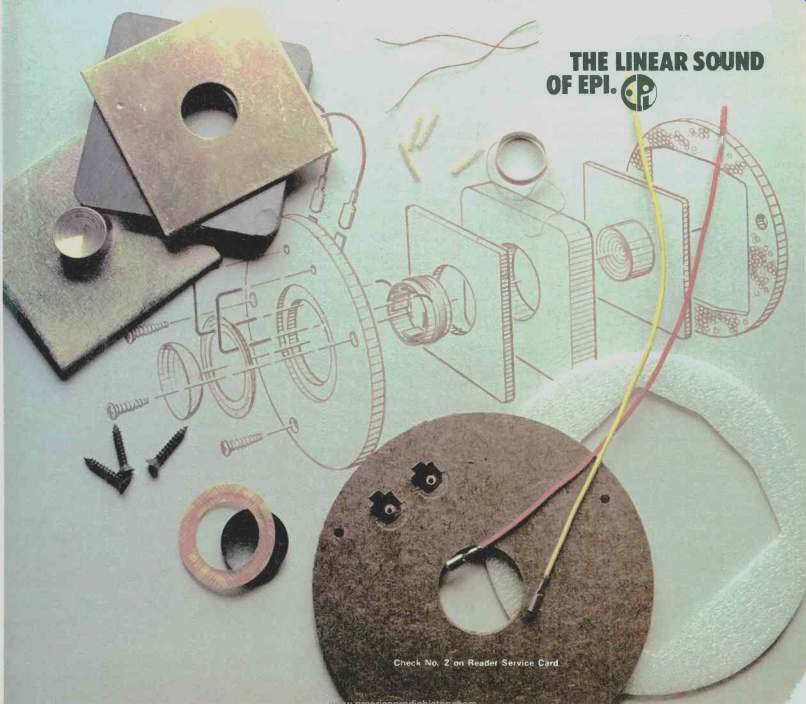
FOR THOSE THAT CAN UNDERSTAND IT, THE SECRET OF EPI's LINEAR SOUND:
Most people would have neither the understanding nor the inclination to read an ad like this.
But that doesn't make it a waste of our money. Because the few people that would read it are, by definition, the best prospects for our EPI loudspeakers.
The subject is linearity.
On a frequency response graph, an EPI speaker records a remarkably linear curve, measured from both on axis and off-axis (60°) positions.
Why is that? It has a lot to do with the kind of tweeter that goes into an EPI speaker.
EPI's 1-INCH "AIR SPRING" TWEETER.
If you've never heard of an "air spring" tweeter, there's a very good reason for that: We made the name up.
We had to. EPI's tweeter is unlike any other made.
Our air spring tweeter has a concave diaphragm which is driven around its full circumference by a 1-inch voice coil. This is coupled with a 14,000 gauss magnetic field contained in a 9-ounce, permanently charged magnet and suspended in a conically-structured, air-sealed acoustic chamber, designed to create an equi-dispersed recoil effect.
The 1-inch diameter permits radiation of a nearly perfect hemispherical sound pattern throughout the tweeter's entire frequency range, from 1800 to 18,000hz ±3db. And as Stereo Review Magazine points out, wide dispersion at all levels is the major factor separating an excellent speaker from a merely good one. (Stereo Review placed our EPI 400 in the "superb" category.) So, now that you know the secret of EPI's Linear Sound, all you need to know is where it comes from:
Out of eight great speakers, from $55 to $1000, made only by Epicure Products Inc., Newburyport, Mass. 01950, USA.
THE LINEAR SOUND OF EPI.

(Audio magazine, Apr. 1973)
Also see:
Epicure (EPI) loudspeaker systems (ad, Oct. 1977)
EPI 601 Speaker Systems (Jan. 1973)
= = = =